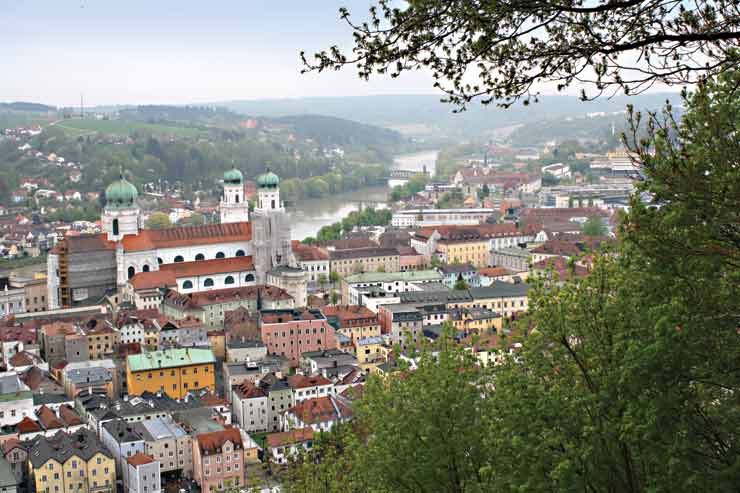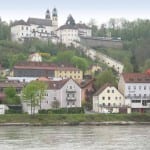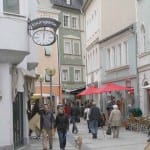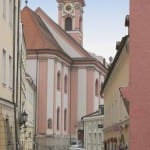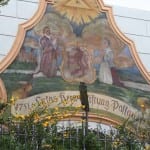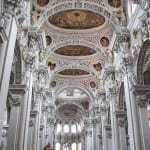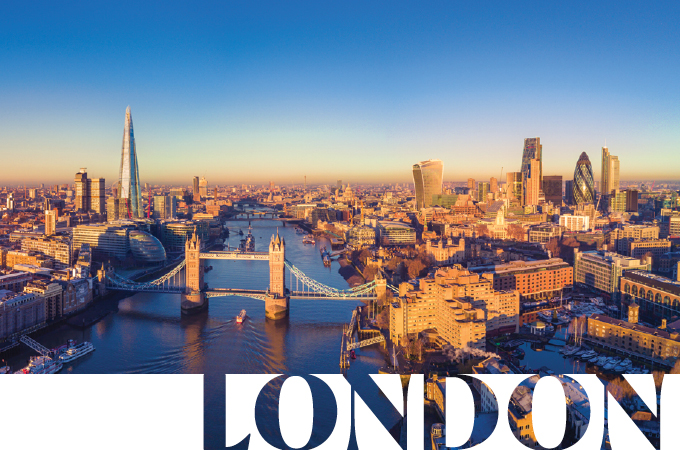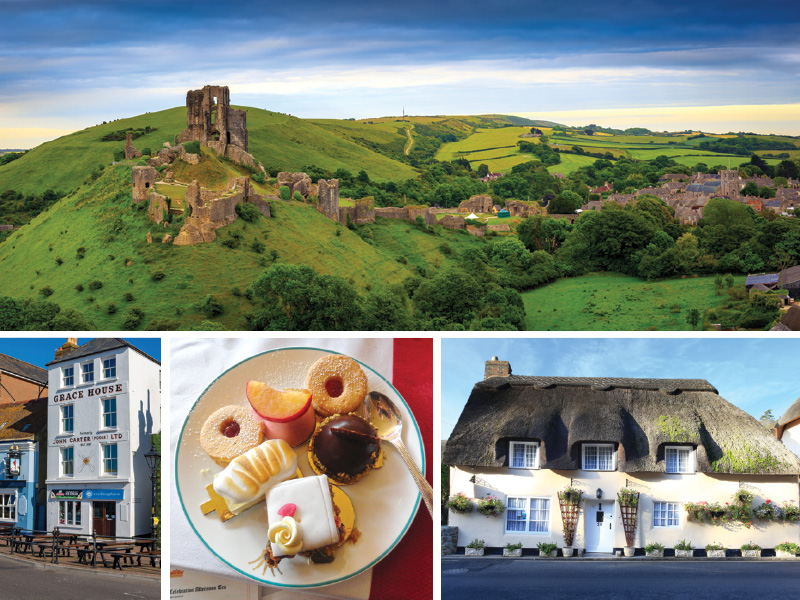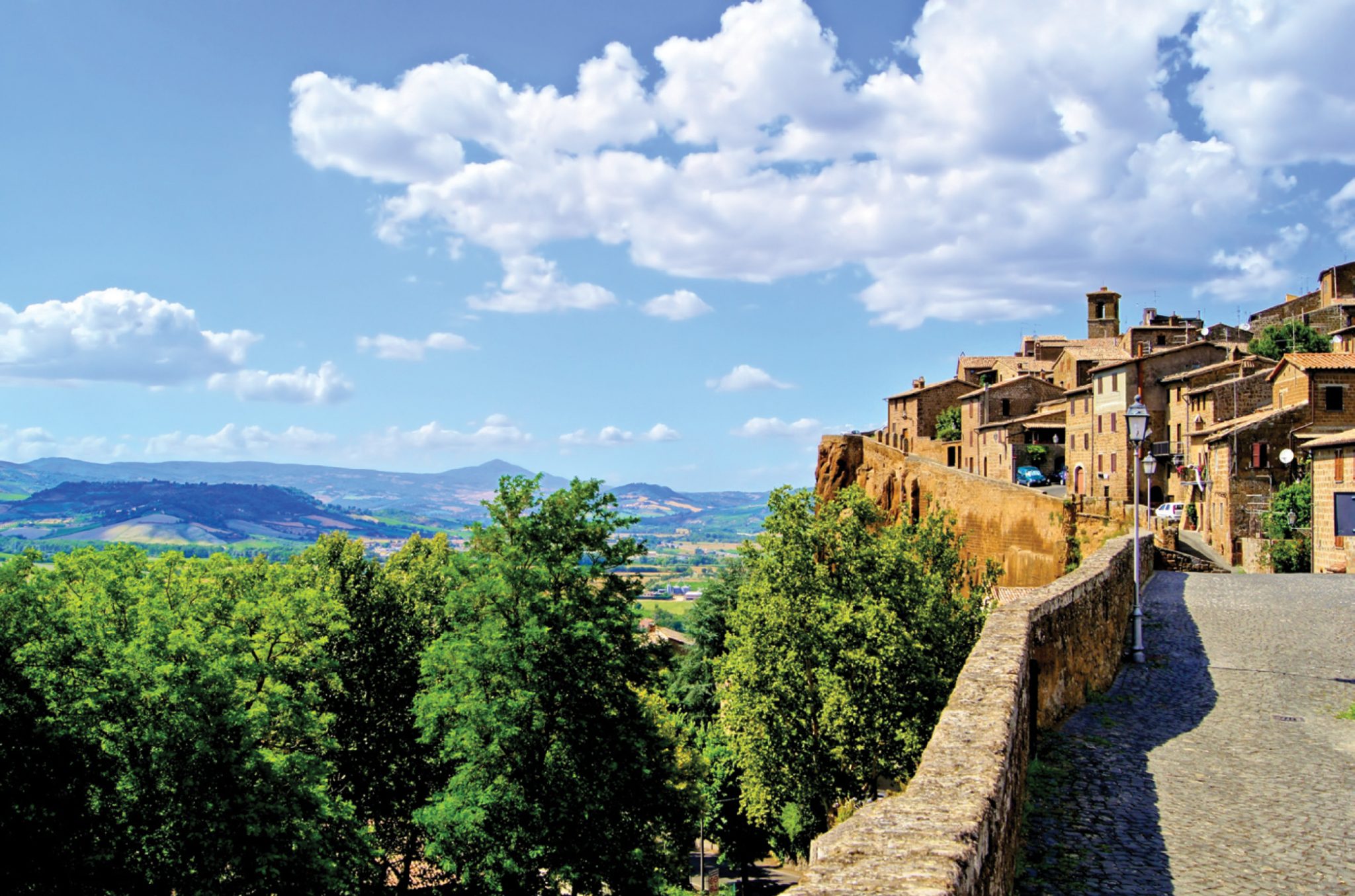Two hours from the bustling hub of Munich is the picturesque Bavarian town of Passau. Far from a household word today, Passau was at one time the most powerful city in the region, thanks to the confluence of three rivers: the Danube, the Ilz and the Inn. They join in Passau and flow east all the way to Turkey and the Black Sea as one river, the Danube.
Passau was the northernmost border between barbaric Germanic tribes and the Romans up until 480 A.D., when the nearby tribes prevailed and the Romans left. That explains the five Roman castles built here, remnants of which can still be seen today, and the old river-side wall. As you’d expect of a place so storied, the streets are made of hand-cut granite cobblestones, harvested from the nearby hills.
A cathedral city more than 2,000 years old, today Passau has barely 50,000 residents. Its charming old town area, high up on a hill overlooking the rivers, offers many delights for the traveler. During the Middle Ages, it was one of the richest towns in Europe, as the city collected taxes from all commerce seeking passage through its rivers. Chief among the commerce that filled its coffers was salt, known as the white gold of the Middle Ages. Widely used to cure meats and leathers, salt was transported from Salzburg’s Salzach River to the Danube at Passau, while en route to Bavaria and Bohemia.
The city’s architecture is Baroque, as a result of a fire in the 17th century that destroyed most of the town. In rebuilding, Italian artisans were brought in to create the elegant Prince Bishop residence that now graces Residenz Platz, where you will also find St. Stephen Cathedral. The site of a church since 739 A.D., the main sanctuary, with its clear-glass windows, is light-infused in the Baroque style and has frescoes along the entire length and width of the ceiling, where a single Italian painter and his apprentice spent 30 years completing the project.
In 1217, the emperor elevated the bishop of Passau to ‘Prince Bishop,’ giving him secular as well as spiritual power, a distinction the powerful state kept until 1803, when Napoleon ended its reign. Three times during that heyday period, Passau’s Prince Bishop position was held by the Austrian Emperor’s brother, a sign of its importance to the empire. Imagery in the church symbolically depicts the clergy with both a bishop’s scepter and a sword. Famous for its organ (the largest church organ in the world), the Passau cathedral actually has five organs, including one called ‘the echo organ’ hidden in the center of the ceiling.
Sharing some trivia with us, our guide, Dieter, a retired engineer, explained why entrance to German churches is always free. It’s thanks to a church tax instituted by Adolph Hitler to discourage religious practice. The fascist leader thought taxing church membership would result in the decline of religion. It didn’t work out that way tiny Passau has 54 churches and a population that is 55 percent Roman Catholic and 15 percent Lutheran. Even today, 8 percent of German taxes go toward the church tax—and help support the 750,000 euros it costs to maintain the Passau Cathedral every year.
While you’d never know to look at it, the little town has a colorful history of famous visitors. The Austrian Emperor Leopold I fled there (it’s very near the Austrian border) when the Turks invaded Vienna in 1683. Legend has it he spent his time drinking German beer, organizing support for his cause and riding a white stallion across the town’s bridge to pray for victory at the church on the hill. Located across the river from the old city, the church is accessed by a covered staircase called the Pilgrim’s Stairs. Worshippers traditionally stopped and said a prayer on each of the 321 steps. Leopold’s prayers (or the beer) must have worked. The Austrians prevailed, chasing out the Turkish invaders and unwittingly launching a beloved Viennese tradition: the coffeehouse. When the Austrians re-entered Vienna, they found hundreds of bags of brown beans hastily left behind, which is how Vienna was introduced to coffee!
Less glorious (and much less publicized) is the home in the hills (near the Pilgrim’s Steps) called the Fogel House, where Hitler lived between the ages of 3 and 6. No plaque or other marking identifies it. A less notorious visitor, General George Patton, led troops into Passau in 1945, and after the war this part of Germany was under the administration of a benevolent American who ended up marrying a Passau girl and staying even after the American occupation ended 10 years later.
Mozart, too, visited Passau, when he was 6 years old and his father brought him and his sister to the Prince Bishop residence to perform. The tale goes that the potentate gifted the family only a single guilder (about 200 euros in today’s money)—hence the city lost to Vienna the distinction of claiming Austria’s most famous composer. Maybe Passau’s loss is our gain; the fascinating little town wouldn’t be nearly as charming overrun by tourists.
By Dorothy Weiner
Photos by Mac Weiner





